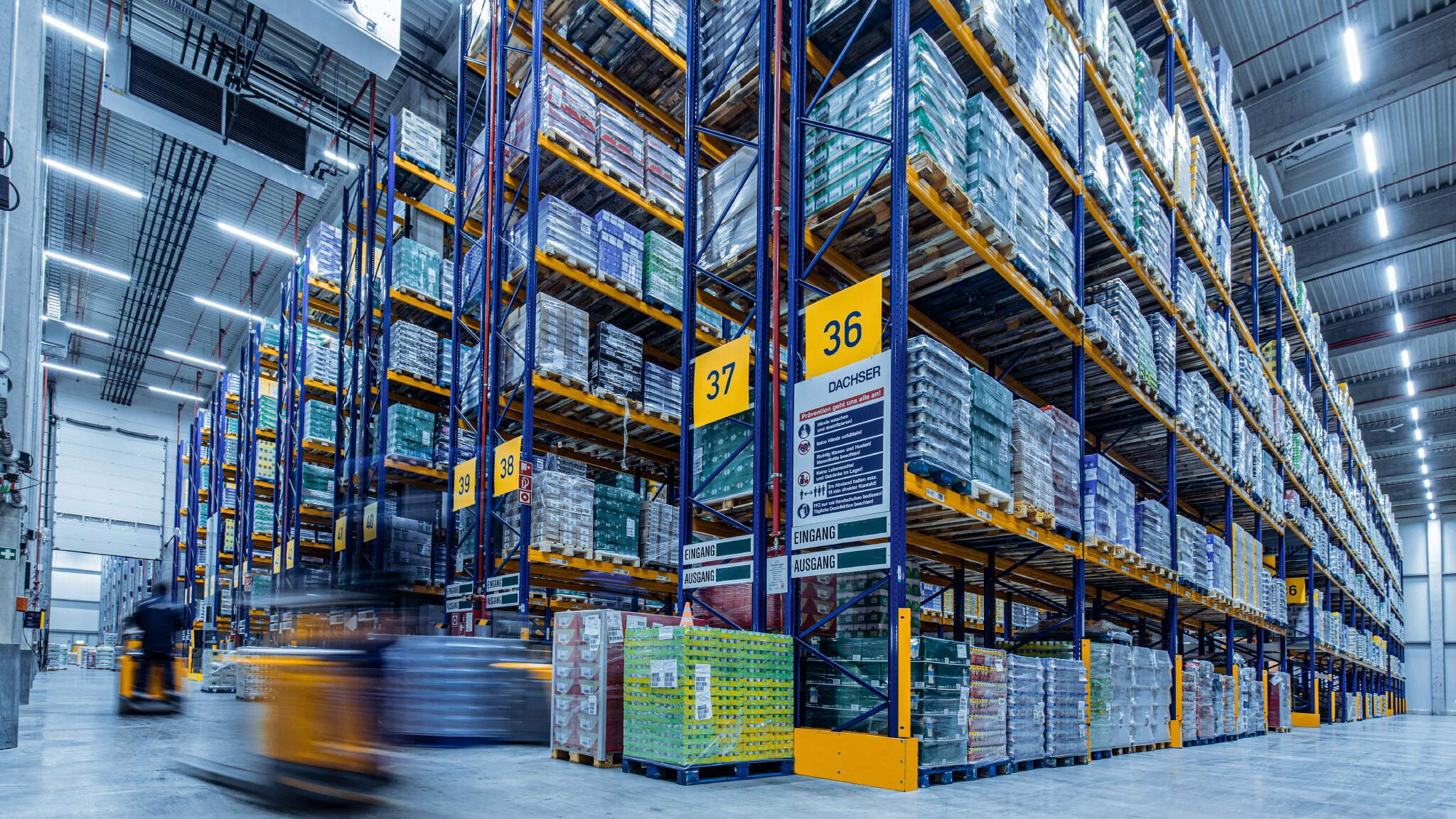Network Optimisation & Warehouse Design: Creating Efficient, Scalable Supply Chains in Australia & New Zealand
1. Why Network Optimisation and Warehouse Design Matter
In Australia and New Zealand, the supply chain landscape is shaped by distance, geography, infrastructure constraints, and increasingly demanding customers. Whether you’re a retailer servicing both bricks-and-mortar and e-commerce channels, a manufacturer supplying multiple regions, or a government agency with critical service levels to meet, your network design and warehouse setup directly determine your cost base, responsiveness, and resilience.
The reality is this: a well-designed network, paired with optimised warehouse layouts and processes, can deliver service improvements and cost reductions in the double digits. A poorly designed network can create bottlenecks, inflate working capital, and slow your ability to adapt.
At Trace Consultants, we see network optimisation and warehouse design not as isolated projects, but as two halves of the same strategic coin—each influencing the other and together shaping long-term performance.
2. Understanding Network Optimisation
What It Is
Network optimisation is the process of designing or refining your distribution network to ensure goods flow through the right number, type, and location of facilities—at the lowest cost possible while still meeting service targets.
This involves:
- Facility location planning – Deciding where to place DCs, warehouses, cross-docks, and other nodes.
- Flow path optimisation – Determining how goods move between suppliers, facilities, and customers.
- Inventory positioning – Deciding what products to hold where, and in what quantities.
- Transport network design – Balancing modes, lead times, and freight costs.
Why It Matters in ANZ
The unique geography of Australia and New Zealand magnifies the consequences of network decisions:
- Long distances between population centres increase freight costs and lead times.
- Port reliance creates potential chokepoints in import-heavy supply chains.
- Seasonality and regional demand variation make flexible capacity critical.
- Infrastructure limitations in rural and remote areas require creative transport solutions.
3. Warehouse Design – More Than Just Floorplans
What It Involves
Warehouse design is the strategic planning of a facility’s layout, processes, and equipment to ensure space is used efficiently, goods flow smoothly, and operations are safe and scalable.
Key elements include:
- Site selection & footprint planning – Ensuring the building supports operational needs now and in the future.
- Internal layout – Positioning receiving, storage, picking, packing, and dispatch areas for minimal travel and handling.
- Racking configuration – Balancing storage density with accessibility.
- Material handling equipment selection – Choosing forklifts, conveyors, automation, or robotics based on throughput and ROI.
- Process flow design – Streamlining inbound, internal, and outbound operations.
- Workforce ergonomics & safety – Designing for compliance, safety, and productivity.
The ANZ Context
In Australia and New Zealand, warehouse design must factor in:
- Labour market constraints – Shortages can make automation attractive, but ROI analysis is critical.
- Property market dynamics – Availability of industrial space in key locations can be limited.
- Environmental requirements – Energy efficiency, sustainability targets, and local compliance standards.
4. Why Network Optimisation and Warehouse Design Should Be Done Together
It’s tempting to treat network design and warehouse design as separate initiatives—one decides where facilities go, the other decides what happens inside them. But in practice, they’re deeply interconnected.
Examples:
- A centralised network might favour a high-automation, high-throughput warehouse.
- A decentralised network might require smaller, more flexible facilities with lower automation investment.
- Inventory strategy will dictate racking design, storage space allocation, and pick-face layout.
- Transport decisions influence dock door numbers, staging space, and yard design.
At Trace Consultants, we often run network and warehouse design modelling in parallel—ensuring they align with each other, and with the client’s broader supply chain strategy.
5. The Process – From Strategy to Execution
Step 1: Current State Assessment
Understand the existing network, warehouse performance, costs, and constraints. Map flows, inventory positions, and facility capabilities.
Step 2: Data Collection & Validation
Gather volume, order profile, SKU, and transport data. Validate it to ensure modelling is accurate.
Step 3: Scenario Modelling
Test different network configurations (e.g., fewer DCs vs. more regional facilities) and warehouse layouts (e.g., different picking methods, automation levels).
Step 4: Trade-Off Analysis
Balance cost, service, flexibility, and risk. In ANZ, this often means weighing higher facility costs against reduced transport spend or improved service to remote customers.
Step 5: Design Finalisation
Confirm the network footprint and warehouse designs that best meet strategic objectives.
Step 6: Implementation Roadmap
Develop a phased plan for property acquisition, construction or fit-out, technology deployment, and change management.
6. Common Pitfalls to Avoid
- Designing in isolation – Making warehouse changes without considering the network, or vice versa.
- Over-automating too soon – Investing heavily in technology without sufficient throughput or stability to justify it.
- Ignoring demand volatility – Designing only for today’s volumes rather than future scenarios.
- Underestimating change management – Not preparing teams for new processes and technologies.
- Failing to stress-test designs – Not modelling how facilities and the network perform under surge or disruption conditions.
7. The Role of Technology in Network & Warehouse Design
While advanced planning systems and simulation tools are valuable, technology is only as good as the process and assumptions behind it.
Typical tools used include:
- Network optimisation software for location and flow modelling.
- Warehouse simulation tools to test layouts and equipment choices.
- Digital twins for scenario testing and risk modelling.
Trace Consultants helps clients select fit-for-purpose tools—whether enterprise platforms or tactical, lower-cost solutions for faster ROI.
8. Sustainability and ESG in Design
Both network optimisation and warehouse design offer significant opportunities to support sustainability goals:
- Reducing transport kilometres by locating closer to demand.
- Energy-efficient warehouse design with LED lighting, solar, and insulation.
- Waste reduction through process improvements.
- Green building standards for new facilities.
Embedding sustainability into design decisions not only supports compliance and brand reputation but can also drive cost savings.
9. How Trace Consultants Can Help
At Trace Consultants, we bring independent, solution-agnostic advice to network optimisation and warehouse design projects.
Our approach includes:
- End-to-end perspective – Linking network strategy to warehouse design, operations, and technology.
- Scenario-based modelling – Ensuring decisions are data-driven and tested against future demand and disruption scenarios.
- Commercial focus – Balancing cost reduction with service and flexibility.
- Implementation support – From property fit-out to process change and technology deployment.
- Sustainability integration – Embedding ESG goals into design decisions.
Because we don’t sell property, equipment, or software, our recommendations are shaped solely by your operational requirements and strategic objectives.
10. Real-World Impact in the ANZ Context
In the ANZ market, optimised networks and warehouse designs have:
- Reduced transport costs by cutting empty running and optimising routes.
- Freed up capital through better inventory positioning.
- Improved customer service levels, especially in regional areas.
- Increased capacity without the need for new facilities, simply through layout redesign.
These outcomes don’t happen by accident—they come from structured analysis, cross-functional collaboration, and disciplined execution.
11. Future Trends in Network Optimisation & Warehouse Design
- AI-driven demand forecasting to better position stock in networks.
- Micro-fulfilment centres to service last-mile delivery faster.
- Flexible automation that can be redeployed as needs change.
- Digital twins for real-time performance monitoring and scenario planning.
- Net zero design principles influencing both network structure and facility specifications.
Final Thoughts
In Australia and New Zealand, the physical network and the warehouses within it are the backbone of supply chain performance. Get the design right, and you unlock lower costs, faster service, and stronger resilience. Get it wrong, and you bake inefficiency into your operations for years.
By bringing together network optimisation and warehouse design into a single, integrated process, Trace Consultants helps organisations make better decisions—grounded in data, aligned with strategy, and ready for the future.














